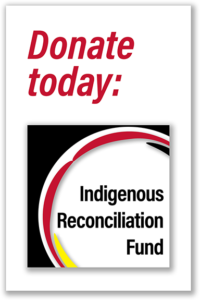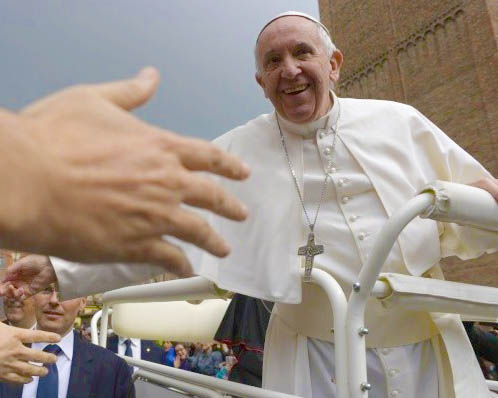 Frequently Asked Questions regarding Residential Schools
Frequently Asked Questions regarding Residential Schools
The discovery of children’s remains at the former residential school in Kamloops, B.C. in June 2021 reopened a painful wound for many across this land. It identified the need for all Canadians to learn more about our history, the role of residential schools as part of that journey, and to seek the truth regarding all those who suffered and continue to do so to this day.
The abuse of Indigenous peoples is a dark chapter in the history of Canada and of the Catholic Church. While the Church has cared for and served Indigenous people in many ways, it is undeniable that some members of the Church undermined the dignity of First Nations peoples. There is clear evidence that much of this abuse occurred at residential schools, which were largely operated by several different Christian denominations at the request of government.
This FAQ is intended to provide some context and address some frequently asked questions about this important issue. We must all join in the collective efforts on the path to healing and reconciliation with Indigenous peoples.
FAQ regarding Residential Schools
“We wish to apologize in a very particular way for the instances of physical and sexual abuse that occurred in those schools…Far from attempting to defend or rationalize these cases of abuse in any way, we wish to state publicly that we acknowledge they were inexcusable, intolerable and a betrayal of trust in one of its most serious forms. We deeply and very specifically, apologize to every victim of such abuse and we seek help in searching for means to bring about healing.”
 The papal visit built on three years of constructive dialogue between the Canadian Bishops, the Vatican, and Indigenous Peoples who have generously shared their experiences and stories about the suffering and challenges that continue to this day. The Holy Father’s announcement wa in response to the expectations expressed by the Bishops during the last meeting of the Plenary Assembly.
The Holy Father was moved by the profound desire of the Bishops of Canada and the Indigenous Peoples that he come to Canada on a pilgrimage of healing and reconciliation, thanks to a joint delegation to Rome that took place in March 2022, where Pope Francis heard directly from Indigenous Peoples on the historical and ongoing legacy of residential schools, as well as their hopes and desires for his visit to Canada.
Edmonton Archbishop Richard Smith was a part of the joint delegation.
The promise was realized when Pope Francis visited Canada in Alberta, Quebec and Nunavut to 'Walk Together' and apologize in July 2022.
The papal visit built on three years of constructive dialogue between the Canadian Bishops, the Vatican, and Indigenous Peoples who have generously shared their experiences and stories about the suffering and challenges that continue to this day. The Holy Father’s announcement wa in response to the expectations expressed by the Bishops during the last meeting of the Plenary Assembly.
The Holy Father was moved by the profound desire of the Bishops of Canada and the Indigenous Peoples that he come to Canada on a pilgrimage of healing and reconciliation, thanks to a joint delegation to Rome that took place in March 2022, where Pope Francis heard directly from Indigenous Peoples on the historical and ongoing legacy of residential schools, as well as their hopes and desires for his visit to Canada.
Edmonton Archbishop Richard Smith was a part of the joint delegation.
The promise was realized when Pope Francis visited Canada in Alberta, Quebec and Nunavut to 'Walk Together' and apologize in July 2022. i. $29 million in cash (less legal costs);
ii. more than the required $25 million of “in-kind” contributions; and
iii. an additional $3.7 million from a “best efforts” campaign.
Those same entities, together with other dioceses, institutes and national Catholic organizations, continue to be involved in efforts across the country to provide in-kind contributions, which go well beyond the scope of the Indian Residential School Agreement.- The National Centre for Truth and Reconciliation is a place of learning and dialogue where the truths of the residential school experience will be honoured and kept safe for future generations. The NCTR was created as part of the mandate of the Truth and Reconciliation Commission of Canada (TRC).
- Our Lady of Guadalupe Circle is a Catholic coalition of Indigenous people, bishops, lay movements, clergy and institutes of consecrated life, engaged in renewing and fostering relationships between the Catholic Church and Indigenous Peoples in Canada. For more information visit: www.ourladyofguadalupecircle.ca
- If you visit the Canadian Conference of Catholic Bishops website you will find a dedicated page to apologies that the Church has made regarding residential schools.
- You can download this document here: Residential Schools - Frequently Asked Questions
Truth & Reconciliation Commission
The TRC released in 2012 a report called They Came for the Children, signed by commissioners Justice Murray Sinclair, Chief Wilton Littlechild, and Marie Wilson. Work continued until June 2, 2015 when four days of special events and ceremonies in Ottawa were capped with the release of the TRC Summary Report. The commission had examined in detail the legacy of the Indian Residential Schools in Canada and issued 94 “Calls to Action” aimed at healing and nurturing the relationship between indigenous peoples and other Canadians. Full details of the Commission’s work can be found at https://nctr.ca/records/reports/.
The schools were funded by the federal government and operated in most cases by churches or religious communities. The Corporation of Catholic Entities Party to the Indian Residential Schools Settlement (CEPIRSS) represents 17 dioceses and 37 religious institutes involved in managing and helping to operate the schools on behalf of the Government of Canada.
Calls to Action recommended to Churches by the TRC will be on the agenda of the next Plenary Assembly of the Catholic Bishops of Canada, set for September 14-18. “We are committed to ensuring that the Calls to Action will be given careful hearing and full discussion,” the statement says. “We are confident they will be carefully considered, and in this process we know we can count on the collaboration of the Canadian Catholic Aboriginal Council.”
Archbishop Gerard Pettipas of Grouard-McLennan, President of the CEPIRSS
“I want to express our appreciation to the Commissioners who have worked tirelessly to lead us all in a very searching examination of conscience in regard to a painful period in our history. The Commission has now presented all Canadians with Calls to Action. … On behalf of Catholic entities, I receive these challenges and encourage others in our community to do so as well. In the next few months, I will be presenting these Calls to Action to all of the Bishops of Canada and to the Canadian Religious Conference as direction posts and milestones on the way to a reconciled future…”
Joint Church Statement
A joint statement was also issued on behalf of The Anglican Church of Canada, The Presbyterian Church in Canada, the Roman Catholic Entities Parties to the Settlement Agreement, The United Church of Canada, and the Jesuits of English Canada. “We are grateful to the survivors, whose courageous witness has touched the heart of the life of our churches. There have been apologies from our churches, yet we know that our apologies are not enough. And so we are grateful as well to the Commissioners of the Truth and Reconciliation Commission for their findings and for their clarity about our continuing responsibilities….”
Rev. Ken Forster OMI, Former Provincial of the Oblates of Mary Immaculate, Lacombe Province
Father Ken preached on reconcilation during his homily on Trinity Sunday. “…These evil acts of ours, whether done intentionally or unintentionally, as well as sins of omission, failing to do the good, need the healing forgiveness of the Creator and the forgiveness of First Nations. Today we pray that we non-aboriginals own the truth of the injury caused by ourselves and by the unjust system of a dominant colonial society that continues today. Let us own our sin and repent! …”
Earlier Public Statements at TRC event in Edmonton, March 2014
- Alberta Bishops TRC Statement Gesture of Reconciliation – delivered by Archbishop Smith
- Oblates of Lacombe Province TRC Statement Gesture of Reconciliation – delivered by Rev. Ken Forster OMI, Provincial
- Canadian Council of Churches TRC Statement – delivered by Lt. Col. Jim Champ, CCC President, CCCB among signers of Statement)
Map of historical Catholic-run residential schools and diocese jurisdictions (1871 to present)
This map does not include schools run by non-Catholic churches such as Anglican, Presbyterian, United, etc.: ONLY the Catholic-run residential schools in Alberta recognized by NCTR are listed here.
To use this map, select ONE FILTER AT A TIME, then view each school for info when it was active.
Residential school colours on map:
- Blue (OMI/Grey Nuns)
- Green (OMI/Sisters of Providence)
- Yellow (OMI/Sisters of Assumption)
Timeline:
- September 22, 1871 – Diocese of Saint Albert (erected)
- July 3, 1901 – Vicariate Apostolic of Athabaska (split)
- November 30, 1912 – Diocese of Calgary (erected)
- November 30, 1912 – Archdiocese of Edmonton (elevated)
- *March 25, 1927 – Vicariate Apostolic of Grouard (name change)
- July 17, 1948 – Diocese of St. Paul (erected)
- July 13, 1967 – Archdiocese of Grouard-McLennan (elevated)
- May 12, 1970 – Diocese of Saint Paul (land added, from Diocese of McKenzie-Fort Smith)
